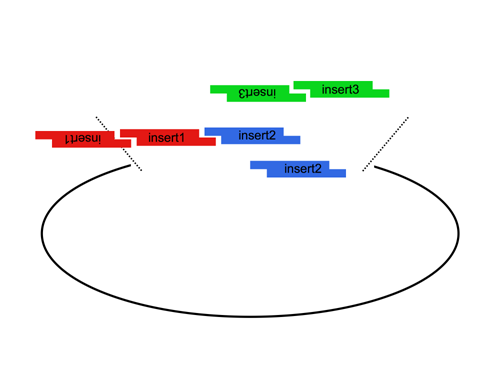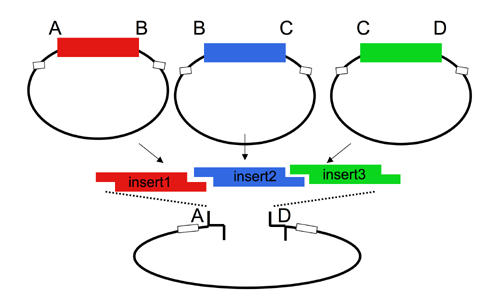Materials and Methods
From 2008.igem.org
(→Materials and Methods) |
(→Materials and Methods) |
||
| Line 22: | Line 22: | ||
For more information on how to clone with the UCSF AarI parts, or better yet, to design your own AarI parts, check out the following protocols. | For more information on how to clone with the UCSF AarI parts, or better yet, to design your own AarI parts, check out the following protocols. | ||
| + | |||
| + | 1. [[Media:Design AarI primers]] | ||
Revision as of 00:52, 22 October 2008
Materials and Methods
1. Cloning
Constructs were cloned by the AarI method, developed by Sergio Pesajovich for the 2007 iGEM competition. This a multi-part/combinatorial cloning method that is particularly well suited to shuffling protein domains with various promoters and terminators. The key to this approach is the Type II-S restriction enzyme, AarI, a rare (7-cutter) that cuts 4bp offset from its binding site. Thus, AarI can generate four base overhangs of any sequence.
Since the user can specify the overhangs, this method can be used to "stitch-together" fragments without a scar, which is sometimes necessary to preserve protein function. More importantly, these overhangs can be non-palindromic, which solves the biggest problem faced when trying to do multipart ligations using standard restriction enzymes, illustrated here:
By contrast, AarI cloning allows high efficiency ligations using up to 4 parts (vector plus 3 inserts). While parts can be made with any 4 base overhang (end), we chose a standard set, termed A, B, C, and D. This allows parts to be traded between researchers. We are building a lab database of parts.
These ends yield 3 possible parts: AB, BC and CD. For two part ligations, we use AB and BD parts. Parts could be promoters, protein domains, or terminators, and are typically generated by PCR from a genomic DNA or plasmid template, then TOPO cloned and sequenced. These donor vectors, once validated, can be shuffled with other validated parts, into acceptor vectors, creating large combinatorial libraries of constructs that do not require further sequencing.
While any vector can be adapted to be an acceptor for AarI cloning, we have been working with the yeast pRS__ series of vectors ([1]), and we provide to the registry several types of acceptor vectors built in the pRS315 or 305 backbone. When necessary, markers exchanged by one-piece subclones of the completed cassettes into alternative pRS vectors, using the Kpn1/PspOMI and SacI sites.
For more information on how to clone with the UCSF AarI parts, or better yet, to design your own AarI parts, check out the following protocols.
AarI Shuttle Vector
To facilitate exchange of parts between AarI users and the biobricks community, we are offering a Shuttle Vector. This vector accepts AarI parts in the AB or BD format (as were used in our 2008 project). These parts can then be cut out of the vector, with in-frame biobrick ends.
 "
"


